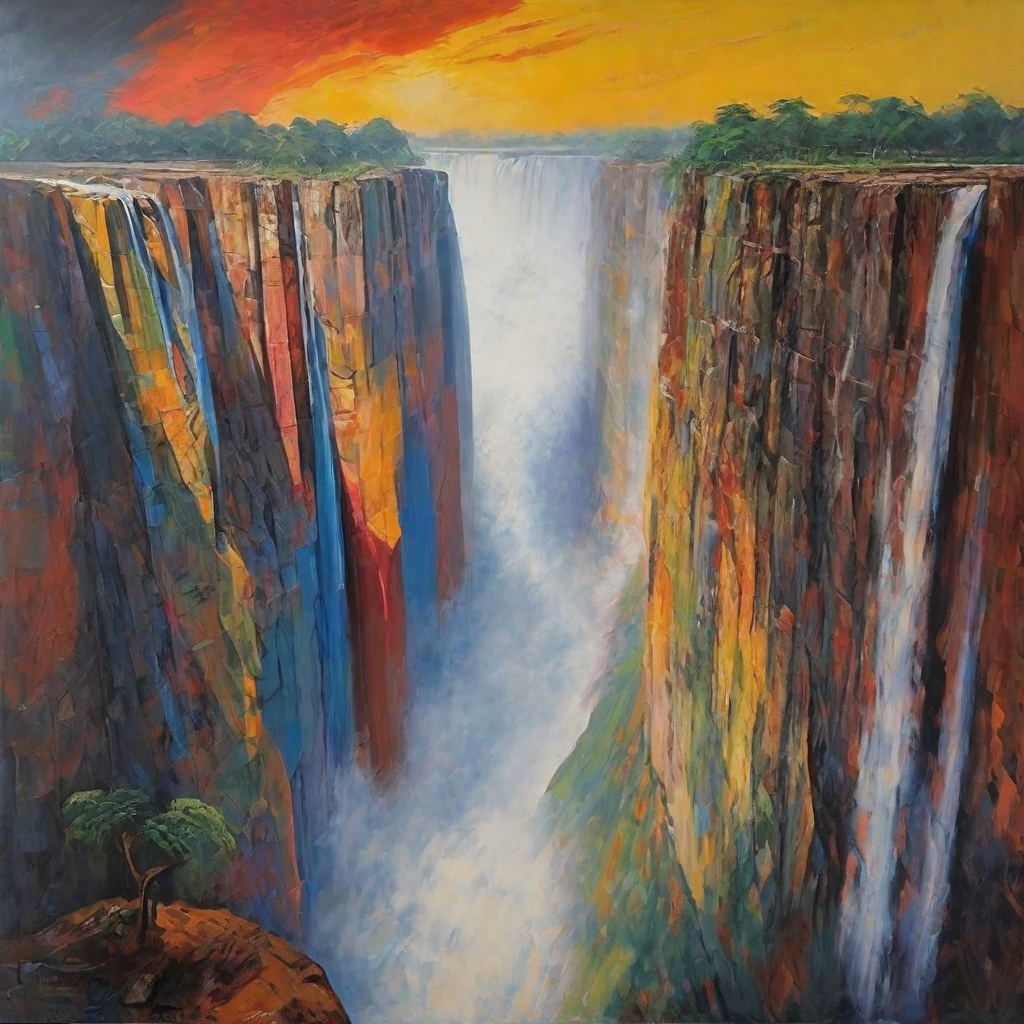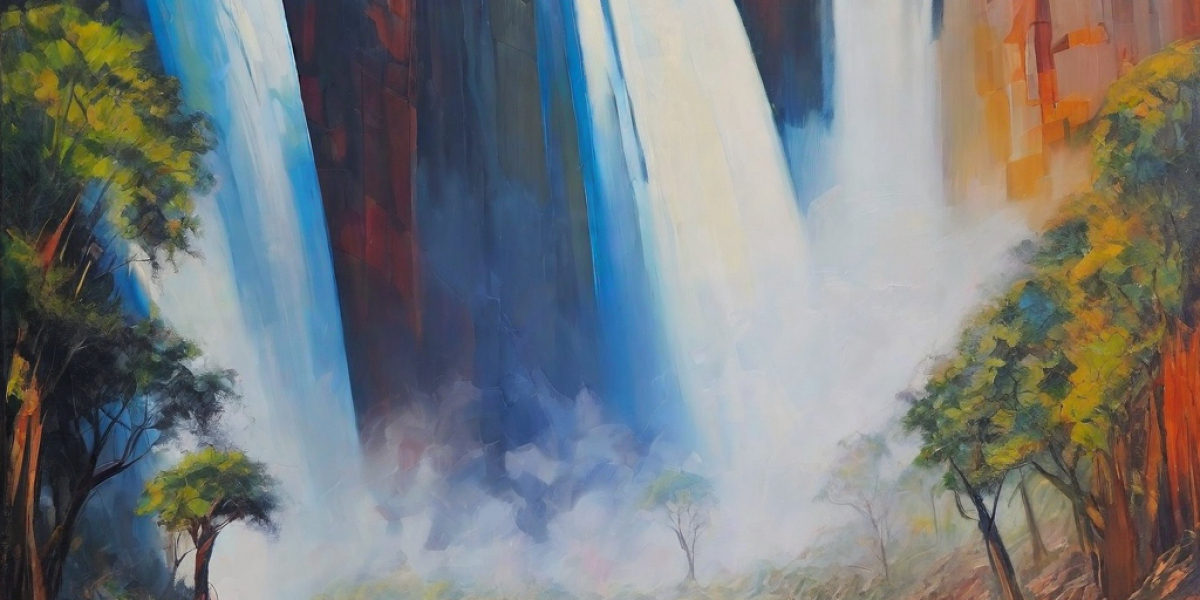# Victoria Falls: The Majestic Wonder of Africa
## Introduction
Victoria Falls, located on the border of Zambia and Zimbabwe in southern Africa, is a natural wonder that leaves visitors awe-struck with its sheer beauty and grandeur. Known as "Mosi-oa-Tunya" or "The Smoke That Thunders" by the locals, this magnificent waterfall is one of the most iconic and spectacular attractions on the African continent. In this article, we will explore the history, geology, and awe-inspiring features of Victoria Falls.
## Formation and Geology
### The Zambezi River
Victoria Falls is formed by the Zambezi River, one of Africa's major rivers. Originating from the highlands of Zambia, the Zambezi River flows through six countries before reaching Victoria Falls. As it approaches the falls, the river narrows and rushes through a series of gorges, culminating in the breathtaking cascade that is Victoria Falls.
### Basalt Plateau and Batoka Gorge
The geological formation of Victoria Falls can be attributed to the basalt plateau in the region. Over millions of years, volcanic activity and subsequent erosion have shaped the landscape, resulting in the formation of a series of gorges along the Zambezi River. The most notable of these is the Batoka Gorge, which extends downstream from Victoria Falls, adding to the dramatic scenery surrounding the falls.
## Features and Dimensions
### The Main Falls
Victoria Falls stretches approximately 1.7 kilometers (1.1 miles) across, making it one of the largest waterfalls in the world. The falls are characterized by a continuous sheet of water plunging over the edge, creating a mesmerizing curtain of mist and spray. During the peak flow season, which typically occurs between February and May, the volume of water cascading down the falls is truly astounding.
### Devil's Pool and Livingstone Island
One of the unique attractions at Victoria Falls is Devil's Pool, a natural pool located on the edge of the falls. During the dry season, when the water levels are lower, visitors can take a guided swim to this thrilling spot and experience the exhilaration of being right at the edge of the precipice. Adjacent to Devil's Pool is Livingstone Island, named after the famous explorer David Livingstone, who was the first European to lay eyes on Victoria Falls.
### The Boiling Pot and Rainbow Falls
Downstream from the main falls, the Zambezi River flows through a narrow gorge known as the Boiling Pot. Here, the powerful current churns and swirls, creating a spectacle of raging water. Just beyond the Boiling Pot, a smaller waterfall known as Rainbow Falls can be seen during certain times of the year, adding an extra touch of natural beauty to the already stunning scenery.
## Cultural and Historical Significance
### Indigenous People and Traditions
The indigenous people of the region, such as the Tonga and Lozi tribes, have long revered Victoria Falls as a sacred site. For generations, they have held various cultural and religious ceremonies at the falls, paying homage to the powerful spirit believed to reside within its waters. These traditions continue to this day, adding an element of cultural significance to the natural wonder.
### European Discovery and Exploration
Victoria Falls gained international recognition when it was first encountered by the Scottish explorer David Livingstone in 1855. Livingstone, who was captivated by the beauty of the falls, named them after Queen Victoria of the United Kingdom. His expeditions and subsequent writings about Victoria Falls brought this natural wonder to the attention of the Western world, sparking interest and attracting visitors from around the globe.
## Conservation and Tourism
### UNESCO World Heritage Site
Recognizing the exceptional beauty and ecological importance of Victoria Falls, it was designated as a UNESCO World Heritage Site in 1989. This designation ensures the protection and preservation of the falls and its surrounding ecosystem, promoting sustainable tourism practices and safeguarding the rich biodiversity of the area.
### Tourism and Adventure Activities
Victoria Falls has become a popular tourist destination, attracting visitors from all corners of the globe. In addition to marveling at the falls' splendor, tourists can engage in a wide range of activities. These include thrilling experiences such as white-water rafting, bungee jumping, helicopter flights, and sunset cruises on the Zambezi River. Wildlife enthusiasts can also explore the nearby national parks, which offer opportunities for game drives and encounters with Africa's iconic wildlife.
## Conclusion
Victoria Falls stands as a testament to the grandeur and beauty of the natural world. Its powerful cascade, stunning dimensions, and culturally significant history make it a must-visit destination for travelers seeking awe-inspiring experiences. As we continue to appreciate and protect this majestic wonder, it is crucial to ensure sustainable tourism practices that preserve the natural environment and support the local communities, allowing future generations to marvel at the magnificence of Victoria Falls.








